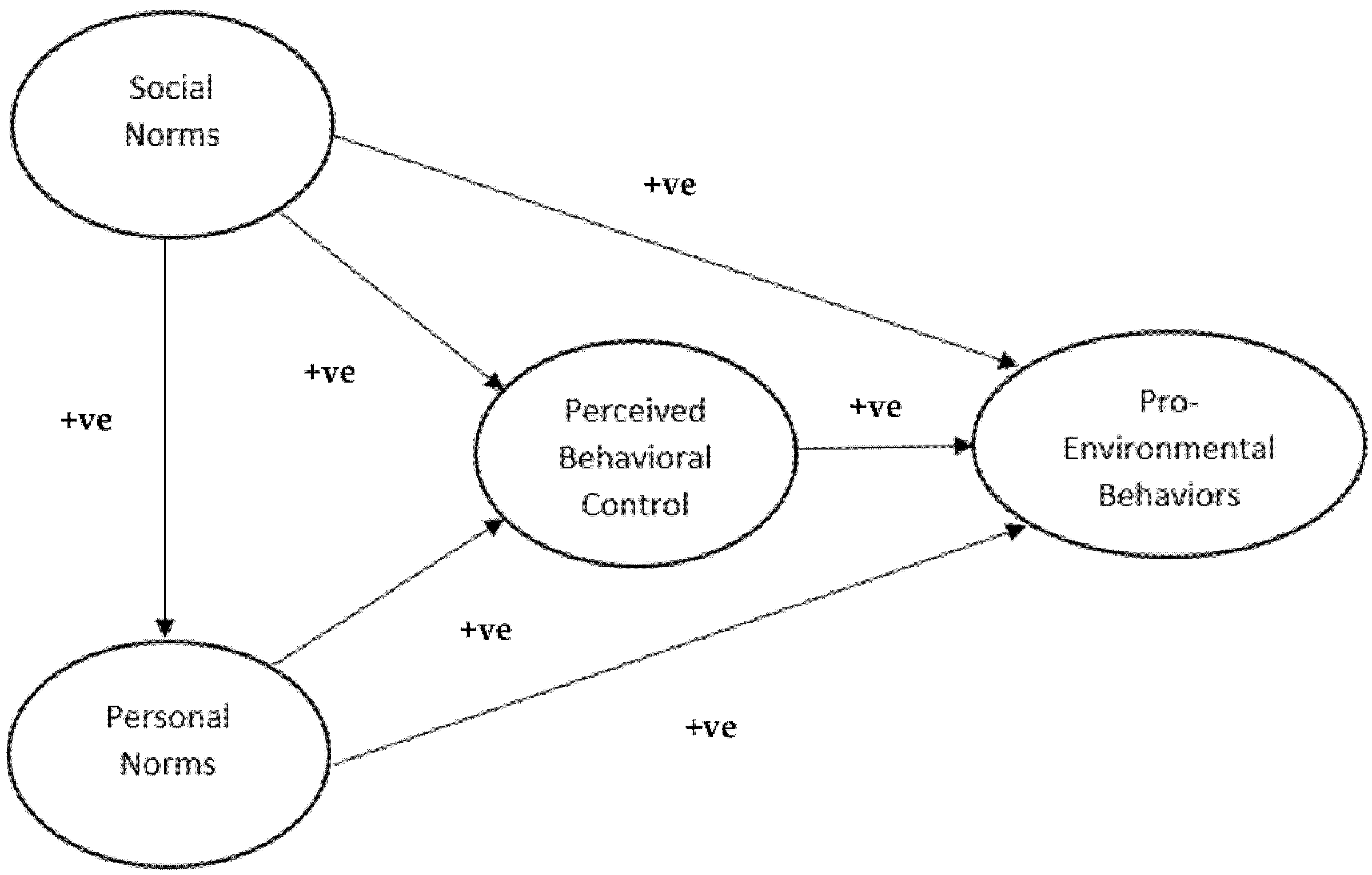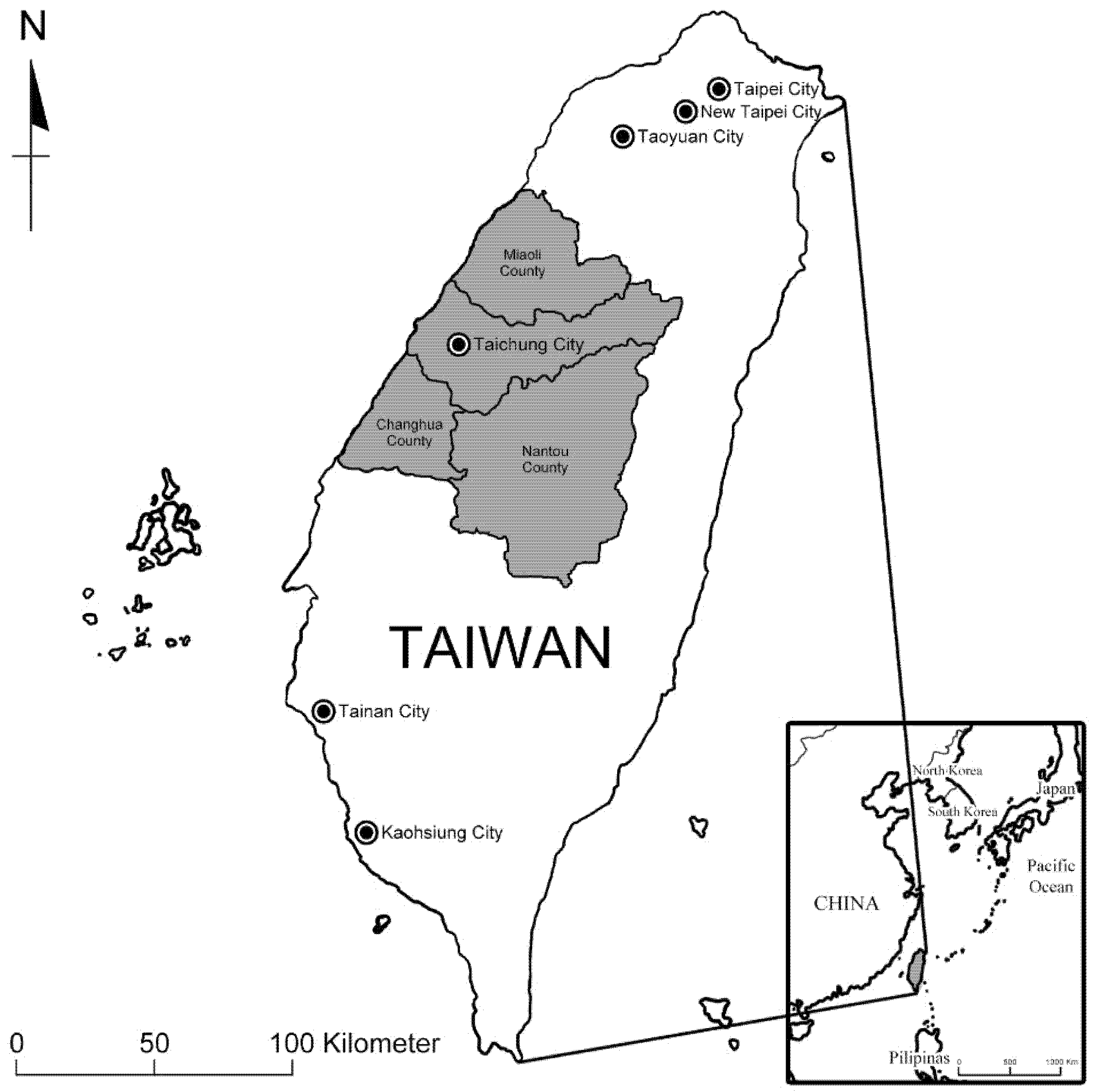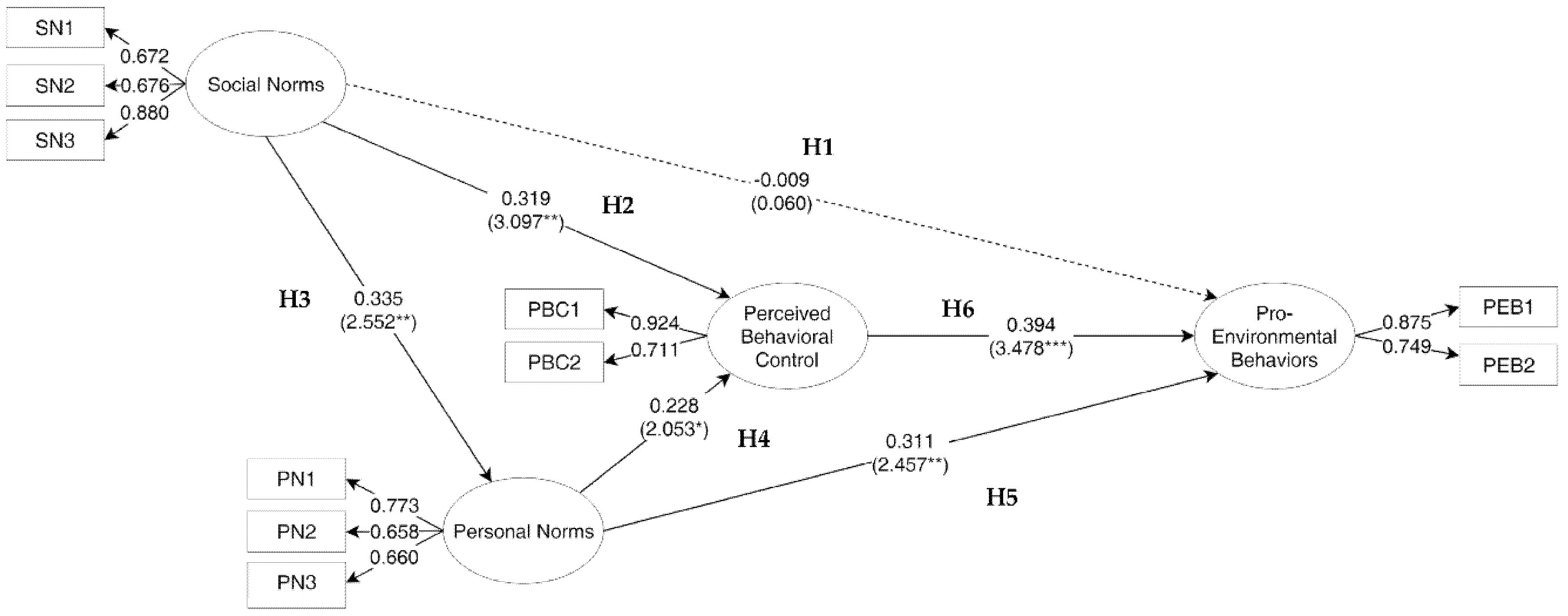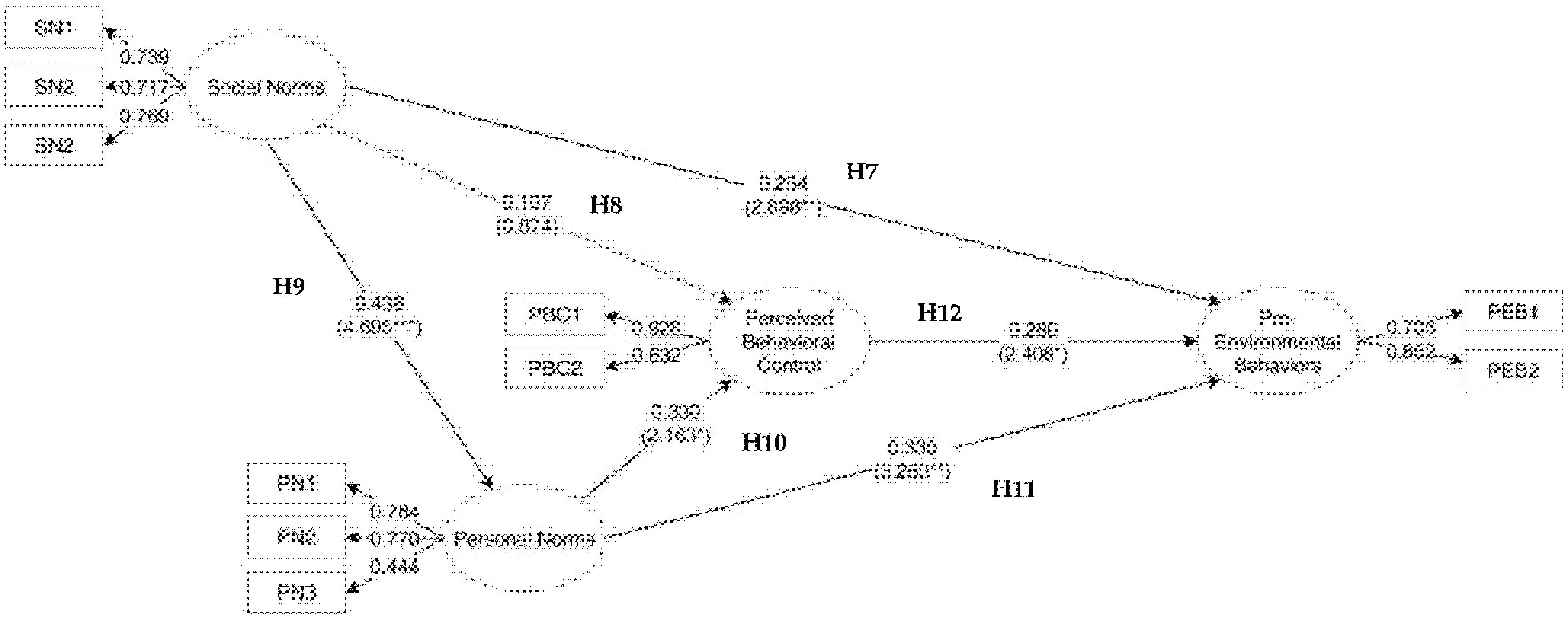4.1. Descriptive Statistics
As shown in
Table 1, the overall results of the questionnaire revealed that there were more males (66.7%) than females (33.3%) that participated in this study, which indicated that the agricultural sector in the Central Taiwan region was mainly dominated by males. Of the total 526 participants, 453 (151 females, 302 males) of them were older than 40 years old while the remaining 73 (24 females, 49 males) were younger than 40 years old. The participants’ education attainments were as follows: junior high school and below (42.6%), senior high school (37.1%), bachelor’s degree (18.6%), and graduate school (1.7%). The proportion of those with a high school education level or above was approximately 50%, which was in line with the result of a survey of farmer households released by the Agriculture and Food Agency in 2014. Most of these farmers specialized in agricultural farming and more than 50% had been engaged in farming for more than several decades, indicating that they had extensive experience in agricultural farming.
Results revealed significant differences between females and males in terms of their social norms (df = 524, two-tailed, t = 3.931 > 1.967, p = 0.000), personal norms (df = 524, two-tailed, t = 4.431 > 1.967, p = 0.000), perceived behavioral control (df = 524, two-tailed, t = 3.015 > 1.967, p = 0.003), and pro-environmental behaviors friendly to farming (df = 524, two-tailed, t = 3.219 > 1.967, p = 0.001). When comparing between females and males in the age group of older than 40 years old, findings showed significant differences in their social norms (df = 451, two-tailed, t = 3.921 > 1.967, p = 0.000), personal norms (df = 451, two-tailed, t = 4.057 > 1.967, p = 0.000), perceived behavioral control (df = 451, two-tailed, t = 3.228 > 1.967, p = 0.001), and pro-environmental behaviors to farming (df = 451, two-tailed, t = 2.924 > 1.967, p = 0.004). However, there were no significant differences (p-value greater than 0.05) found between females and males in the under 40 years old age group for their social norms, personal norms, perceived behavioral control, and pro-environmental behaviors to farming.
When comparing the two age groups (i.e., farmers older than 40 years old, and farmers younger than 40 years old), significant differences were found in their personal norms (degree of freedom, df = 524, two-tailed,
t = −2.403 > 1.96,
p = 0.018), and perceived behavioral control (df = 524, two-tailed,
t = −2.753 > 1.96,
p = 0.011).
Table 2 summarizes the results of the analysis of differences between the two age groups’ social norms, personal norms, perceived behavioral control, and pro-environmental behaviors.
In terms of social norms, the older farmers had consistently attained a higher mean score value than the young farmers for all the question items “My friends would recommend that I use pesticides and herbicides to prevent damage caused by pests and weeds.” “My friends around me spray pesticides and herbicides regularly.” and “Many farmers spray pesticides and herbicides.” This indicated that older farmers in Central Taiwan were more sensitive to the social impact of using pesticides and herbicides than young farmers. Results of the social norms items are presented in
Table 3.
On the other hand, young farmers achieved a higher mean score than the older farmers in all the question items (“I know that the use of pesticides and herbicides will have a negative impact on crops and soil.” “I know that crops with residual pesticides and herbicides will cause human injury and illness.” and “I know that spraying pesticides and herbicides is not the best way to maintain agricultural quality.”) related to personal norms. The results suggested that young farmers in Central Taiwan had a better understanding of the consequences of using pesticides and herbicides than the older farmers.
Table 4 presents summary results of the personal norms items.
With regards to perceived behavioral control, young farmers had a higher mean score in all question items, “I can restrain myself from using pesticides and herbicides even if there are many weeds in the farmland.” and “I will not kill them even if wild animals damage the crops.” than the older farmers. The outcome revealed that young farmers in Central Taiwan were more aware of the need to control the use of pesticides and herbicides, and were more willing to protect wildlife than the older farmers. Results of the perceived behavioral control items are presented in
Table 5.
When considering the pro-environmental behaviors, older farmers were lacking behind the young farmers in all the question items, “I use pro-environmental farming methods and try not to spray pesticides and herbicides.” and “I do not use pesticides but instead use energy and pro-environmental efficient techniques for farming.” The findings indicated that young farmers in Central Taiwan were more willing to control the use of pesticides and herbicides, and less likely to use them to kill pests or weeds in the farmlands than the older farmers.
Table 6 presents the results associated with the pro-environmental behaviors items.
4.3. Path Analysis and Structural Equation Model
The dimensions of the young farmers’ pro-environmental behaviors were analyzed using SmartPLS 2.0, and the results are presented in
Table 8. The PLS results revealed that young farmers had different paths of pro-environmental behaviors from older farmers. The average variance extracted (AVE) values on the three dimensions (social norms, perceived behavioral control, and pro-environmental behaviors) for young farmers were greater than 0.5, indicating that each dimension had achieved a convergent validity level. Although the AVE value of the personal norms dimension was 0.484, it was still greater than the acceptable value of 0.4 [
44]. The composite reliability (CR) of each dimension was greater than 0.7, indicating that the internal consistency of each dimension met the standard. The Cronbach’s α of social norms, perceived behavioral control, and pro-environmental behaviors all reached a credible standard of 0.5 or more, and the Cronbach’s α of personal norms reached 0.4. The R
2 of personal norms, perceived behavioral control, and pro-environmental behaviors were 0.112, 0.202, and 0.329, respectively.
Figure 3 presents the model structure of pro-environmental farming behaviors among young farmers. The bootstrapping method was used to obtain the
t-value of the path and test its significance level. According to the path analysis, social norms (
= −0.009,
t = 0.060) were not directly impacting on pro-environmental behaviors, but instead had a direct and predictive impact on perceived behavioral control (
= 0.319,
t = 3.097) and personal norms (
= 0.335,
t = 2.552). Therefore, H1 was not supported since there was no evidence of a direct influence of social norms on pro-environmental behaviors of young farmers. However, H2 and H3 were supported since the findings revealed a direct positive influence of social norms on perceived behavioral control, and personal norms, which were intervening variables of pro-environmental behaviors. Results also showed that personal norms had a direct effect on perceived behavioral control (
= 0.228,
t = 2.053), and pro-environmental behaviors (
= 0.311,
t = 2.457). Hence, H4 and H5 were supported since personal norms had direct positive effects on perceived behavioral control and pro-environmental behaviors. H6 was also supported because there was clear evidence on the direct positive influence of perceived behavioral control (
= 0.394,
t = 3.478) on pro-environmental behaviors.
The dimensions of pro-environmental farming behaviors of older farmers were also analyzed using SmartPLS 2.0. As shown in
Table 9, results indicated that the AVE values for social norms, perceived behavioral control, and pro-environmental behaviors were greater than 0.5, indicating that each dimension had achieved a convergent validity level. While the AVE value of personal norms was 0.469, it was still within the acceptable value of greater than 0.4 [
44]. The CR of each dimension was greater than 0.7, indicating that the internal consistency of each dimension met the standard. The Cronbach’s α of social norms met the credible standard of 0.6 or more, whereas the Cronbach’s α of personal norms and perceived behavioral control reached 0.4, and the Cronbach’s α of the pro-environmental behaviors was 0.35. The R
2 of personal norms, perceived behavioral control, and pro-environmental behaviors was 0.190, 0.1513, and 0.431 respectively.
The model structure of the pro-environmental farming behaviors among older farmers is presented in
Figure 4. The bootstrapping method was used to obtain the
t-value of the path and test its significance level. Analysis results showed that social norms of the older farmers had a direct predictive impact on pro-environmental behaviors (
= 0.254,
t = 2.898) and personal norms (
= 0.436,
t = 4.695) but had no direct impact on their perceived behavioral control (
= 0.107,
t = 0.874). Therefore, H7 and H9 were supported since a direct influence of social norms on pro-environmental behaviors and personal norms was established. However, H8 was not supported as there was no evidence of social norms affecting perceived behavioral control. Findings also suggested that there was direct influence of personal norms on perceived behavioral control (
= 0.330,
t = 2.163) and pro-environmental behaviors (
= 0.330,
t = 3.263), and perceived behavioral control (
= 0.280,
t = 2.406) on pro-environmental behaviors. Thus, H7, H8 and H9 were supported confirming the positive direct influence of personal norms on pro-environmental behaviors, and perceived behavioral control, which also had an indirect impact on pro-environmental behaviors.











